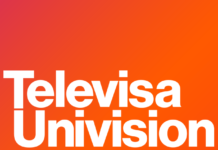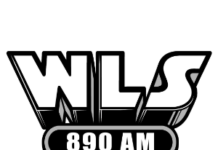
Last week on Facebook, attorney Stephanie Few joined us to dig into the federal government’s plan to help small businesses through the CARES Act. We were unable to answer all of the questions during the time we had with Stephanie that day. We forwarded her all of the remaining questions and here are the answers…
QUESTION: Our lender took our application and paperwork but currently says they don’t have enough knowledge shared to them about this so they aren’t sure which way it will be going or what to tell us at all. Are there places we can share with them that may be able to help them understand this SBA better?
STEPHANIE FEW: The Small Business Administration has published a significant amount of guidance on the Program on its website, including frequently asked questions for PPP lenders and borrowers and a set of forms and guidance specifically for lenders. The SBA also maintains a Lender customer assistance line at 1-833-572-0502.
Beyond the materials published by the SBA, a number of third-party sources (including, most likely, the lender’s own outside attorneys) have published guidance as to how lenders and borrowers can utilize the Program.
QUESTION: The PPP application asks for monthly payroll costs X 2.5 hypothetically to include other expenses like rent, utilities. For how long is this estimated cost intended to last. Does the 2.5 multiplier suggest 2 1/2 months?
STEPHANIE FEW: For most businesses, the maximum loan amount under PPP will be based on (i) the average monthly payment for payroll costs for the one-year period (either 2019 or trailing 12 months) before the date of the loan, multiplied by (ii) 2.5. It should be noted that these calculations are slightly altered for seasonal businesses and businesses formed this year. The forgiveness feature of these loans applies to the first 8-weeks after loan origination, so it appears the intent is for the amount to cover payroll plus some mortgage interest, rent, or utility payments during that 8-week period. You aren’t required to spend the funds during the 8 weeks, but if you don’t, then you wouldn’t be eligible for forgiveness on any remaining unspent portion and it would be treated as a loan.
QUESTION: If there’s an employee that makes over 100K, are we to limit the calculation for that individual as if they only made 100K?
STEPHANIE FEW: Correct. You may include cash compensation paid to this employee up to $100,000, but must exclude any amounts in excess of $100,000.
QUESTION: Are talent fees included in what the government considers payroll or is it just salaries?
STEPHANIE FEW: The guidance issued by the SBA defines “payroll costs” fairly broadly, including any compensation to an employee in the form of salary, commissions, tips, vacation payments, sick leave or similar leave, and severance payments. It is likely that this broad definition would pick up talent fees, but borrowers should remember two things. First, payroll costs only include compensation to an employee of the borrower. Second, only total compensation of an employee up to $100,000 can be counted toward payroll costs.
QUESTION: Has there been any indication of what the follow up paperwork will look like to make sure all the guidelines were met?
STEPHANIE FEW: As part of the application, you need to certify in good faith that you will provide to the lender documentation that verifies the number of full-time equivalent employees on payroll and the dollar amounts of payroll costs, mortgage interest payments, covered rent payments, and covered utilities for eight weeks after getting the loan. It is likely that, if a lender comes back to request follow-up information or paperwork, it will relate to the payroll information provided in the application. While the government retains the ability to audit lenders’ and borrowers’ compliance with the program in the future to ensure that the requirements were met, it is unclear at this point what the scope of this audit process will be.
QUESTION: What is the time period covered for utility bills? Past or going forward?
STEPHANIE FEW: PPP loans can be used for utility payments that are made during the time while the loan is outstanding. However, if the borrower is seeking to include these utility payments as part of the amount of the loan that can be forgiven, the utility payment must be for services related to electricity, gas, water, transportation, telephone or internet spent during the 8 weeks post-loan origination and for which service began before February 15, 2020.
QUESTION: Do my 1099 contractor payments qualify as part of the money that I would apply for under PPP?
STEPHANIE FEW: Independent contractors do not count as employees for purposes of a Paycheck Protection Program loan application. Independent contractors have the ability to apply for PPP loans on their own, so they cannot be counted on another borrower’s application. Payroll costs for independent contractors refers to wages, commissions, income, or net earnings.
QUESTION: What about regulatory fees?
STEPHANIE FEW: Regulatory fees do not qualify as part of the money that you would apply for under PPP. The statute and guidance provide that PPP loans can be used for payroll costs, continuation of certain health care benefits, mortgage interest, rent, utility payments, interest on debt incurred before February 15, 2020 and refinancing of certain other SBA loans. “Payroll costs” for this purpose include salary, wages, commissions, or other similar compensation, as well as tips, payment for leave, severance packages, employee group health care benefits, and state and local taxes on compensation.
QUESTION: I have gotten solicitations from unknown entities who say they can accept a Payroll Protection Program loan. Do we need to worry about scams?
STEPHANIE FEW: We would certainly recommend vetting potential lenders and others offering assistance under the Program. The SBA has posted on its website a list of eligible lenders who can make loans under the Program, and we would suggest ensuring that anyone making a solicitation is included on this list. You should also know that no fees are required to be paid to obtain a PPP loan, so do not pay anyone to process your application.
QUESTION: I heard there was an Employee Retention Credit program based on declining gross revenue giving a refundable payroll tax credit per employee. True?
STEPHANIE FEW: Correct. The CARES Act includes a refundable tax credit in the amount of 50% of the qualified wages paid to employees of certain companies. The credit applies against the employer’s portion of the Social Security tax. The maximum amount of the credit is $5,000 per employee. The credit may be available to companies who suspended its business during 2020 due to an order from the government limiting business activity. The credit may also be available if the employer saw a significant decline in gross receipts (over 50%) during a quarter in 2020 compared to the same quarter in 2019.
Additional details on this credit are available on the Internal Revenue Service’s webpage for the program, and companies interested in claiming the credit are encouraged to contact their tax accountants and legal counsel for further guidance.






Logically, the average monthly payroll would be annual payroll for fulltime employees divided by 12. Easy calculation using gross pay off the w-2’s.
Not what our bank was told–what was asked for was average monthly payroll calculated from first quarter payroll. We pay bi-weekly–so that was 7 pay periods. Divide by 7, multiply by 26, then divide by 12. (Having worked collecting child support in my other life I know there are 4.3 weeks in a month).
Difference in our case was about $5K–heavy sports coverage increases payroll and commissions in the fall. And, of course, January is always slow–though not dead llike this April.